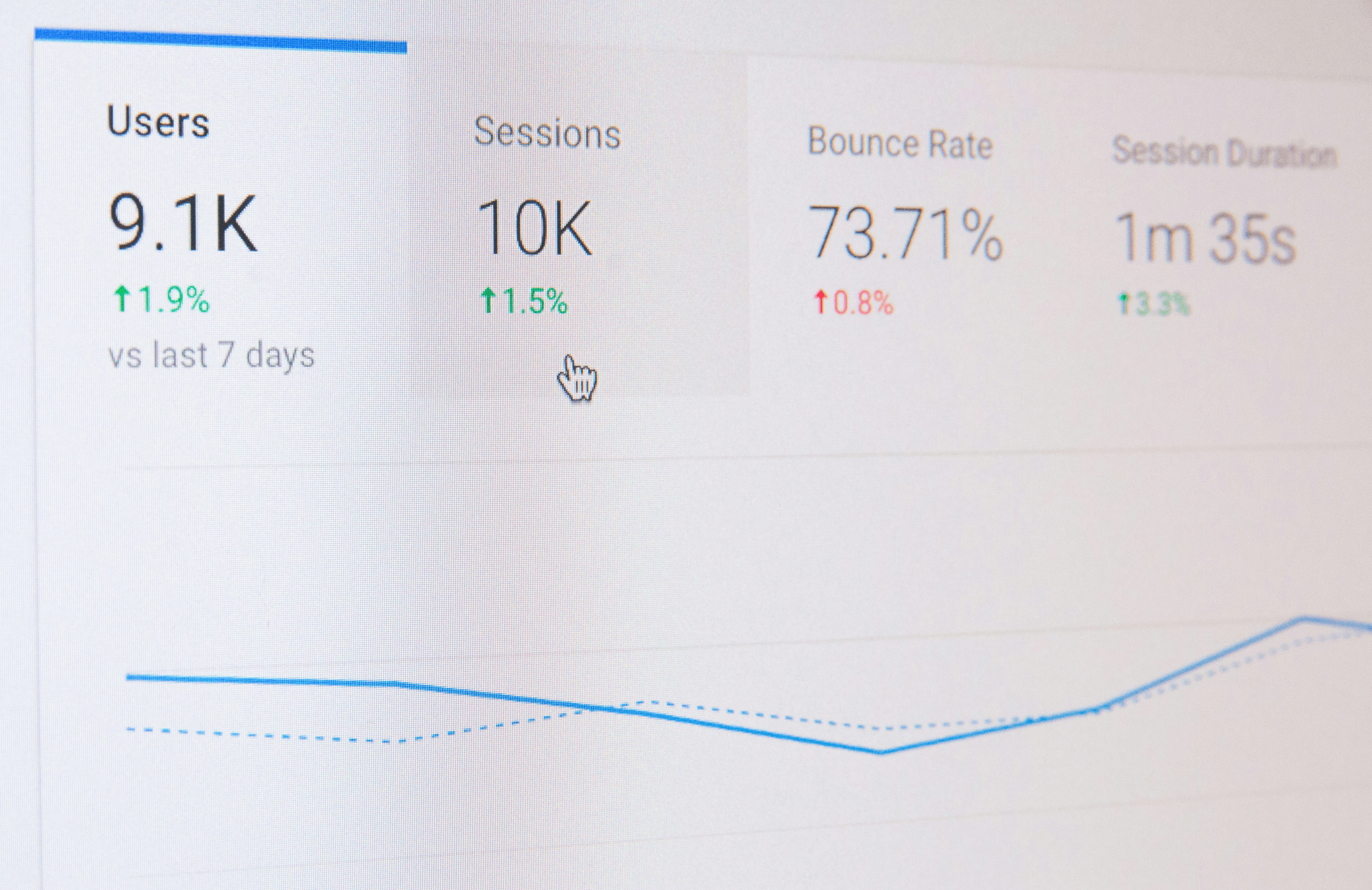Introduction
In today's fast-paced business environment, sourcing and category management have emerged as pivotal functions for organizations striving to maintain a competitive edge. These processes not only streamline procurement but also enhance operational efficiency, allowing companies to adapt quickly to market demands. SSOURCING INC. recognizes the vital role that effective sourcing and category management play in driving profitability and innovation.
The Importance of Sourcing and Category Management
Sourcing and category management are essential for optimizing supply chains, reducing costs, and improving quality. By strategically managing supplier relationships and categorizing procurement needs, businesses can align their purchasing strategies with broader organizational goals. For companies like SSOURCING INC., mastering these practices is key to delivering value to clients while maintaining resilience against market fluctuations.
Trends Shaping Today's Supply Chain
The landscape of sourcing and category management is continuously evolving due to technological advancements, globalization, and shifting consumer preferences. Current trends include increased automation through artificial intelligence, a focus on sustainability, and the rise of e-commerce platforms that demand agile supply chain responses. Staying ahead of these trends allows SSOURCING INC. to provide innovative solutions tailored to meet the dynamic needs of clients.
Key Challenges in Sourcing and Category Management
Despite its importance, sourcing and category management face several challenges that can hinder success. Issues such as supplier risk management, data integration difficulties, and fluctuating market conditions complicate decision-making processes for organizations worldwide. At SSOURCING INC., addressing these challenges head-on is crucial for fostering strong supplier relationships while ensuring efficient procurement practices.
Understanding Sourcing and Category Management

Sourcing and category management are vital components of a successful supply chain strategy. They involve the process of identifying, evaluating, and engaging suppliers to acquire goods and services efficiently. By mastering these elements, businesses can optimize costs, enhance quality, and ensure timely delivery.
Definition and Key Concepts
At its core, sourcing refers to the process of finding suppliers for products or services required by a business. Category management takes this a step further by analyzing groups of related products to develop strategies that maximize value across those categories. Together, sourcing and category management create a framework that helps organizations make informed purchasing decisions while aligning with broader business objectives.
Key concepts in this field include supplier evaluation, total cost of ownership (TCO), and strategic sourcing methodologies. For instance, TCO not only considers the purchase price but also factors in logistics, maintenance, and disposal costs over the product's lifecycle. Understanding these concepts is crucial for companies like SSOURCING INC., which aims to streamline operations while fostering strong supplier relationships.
Benefits for Businesses
The advantages of effective sourcing and category management are manifold. First off, they lead to significant cost savings by enabling businesses to negotiate better terms with suppliers through informed decision-making processes. Additionally, these practices foster innovation by encouraging collaboration with diverse suppliers who bring unique perspectives and solutions.
Moreover, businesses that invest in robust sourcing strategies often experience improved risk management as they can diversify their supplier base to mitigate disruptions. This proactive approach not only enhances resilience but also positions companies like SSOURCING INC. as leaders in their respective industries by ensuring consistent quality and delivery standards.
Real-World Applications and Examples
Real-world applications of sourcing and category management abound across various industries. For example, retailers often utilize category management techniques to optimize their product assortments based on consumer preferences—think about how grocery stores group similar items together for easier shopping experiences! This strategy ultimately leads to increased sales per square foot.
Another compelling case is found in the automotive sector where manufacturers employ strategic sourcing methods to secure high-quality parts at competitive prices while maintaining strong relationships with key suppliers—ensuring that production lines run smoothly without costly delays. Companies like SSOURCING INC., which prioritize effective sourcing practices within their operations, can replicate such successes by tailoring strategies specific to their market needs.
Technology's Role in Sourcing

In the ever-evolving landscape of sourcing and category management, technology plays a pivotal role in driving efficiency and innovation. From artificial intelligence to cloud-based solutions, the integration of advanced technologies is reshaping how businesses manage their supply chains. Companies like SSOURCING INC. are at the forefront of leveraging these innovations to enhance their sourcing strategies.
Impact of Artificial Intelligence
Artificial intelligence (AI) has revolutionized sourcing and category management by providing data-driven insights that were previously unattainable. With AI algorithms, businesses can analyze vast amounts of data to identify trends, forecast demand, and optimize supplier selection processes. This not only streamlines operations but also empowers decision-makers at companies like SSOURCING INC. to make informed choices that align with broader business goals.
Moreover, AI enhances risk management by predicting potential disruptions in the supply chain before they occur. By leveraging machine learning models, organizations can proactively address vulnerabilities in their sourcing strategies and ensure continuity in operations. The result? A more resilient supply chain capable of adapting to market fluctuations while maintaining strong supplier relationships.
Cloud-Based Solutions in Supply Chain
Cloud-based solutions have emerged as game-changers for sourcing and category management by enabling real-time collaboration across teams and locations. These platforms facilitate seamless communication between stakeholders, allowing for quicker decision-making processes that are vital for today’s fast-paced business environment. For instance, SSOURCING INC.'s adoption of cloud technologies has significantly improved its ability to manage supplier interactions efficiently.
Additionally, cloud solutions provide a centralized repository for data analytics tools that enhance visibility into procurement activities and supplier performance metrics. This transparency allows organizations to track key performance indicators (KPIs) effectively and make adjustments as needed to improve overall sourcing strategies. As a result, companies can leverage this information not just for immediate gains but also for long-term strategic planning.
Real Case Studies of Successful Adaptation
Several companies have successfully adapted technology into their sourcing and category management practices with impressive results. For instance, a leading consumer goods company implemented AI-driven analytics tools that enabled them to reduce procurement costs by 15% within just one year—an achievement attributed directly to enhanced data visibility and smarter negotiation tactics facilitated by technology.
Another notable example comes from an automotive manufacturer that embraced cloud-based solutions for inventory management across its global supply chain network. By doing so, they improved inventory turnover rates while minimizing excess stock levels—showcasing how technology can lead to significant operational efficiencies in sourcing activities.
These success stories underscore the importance of integrating advanced technologies into sourcing strategies not just as a trend but as a necessity for staying competitive in today's marketplace.
Developing Strong Supplier Relationships

In the realm of sourcing and category management, building robust supplier relationships is essential for long-term success. A collaborative approach can lead to innovative solutions, cost savings, and improved service levels. By focusing on developing these relationships, businesses can enhance their overall supply chain performance.
Best Practices for Supplier Negotiation
Negotiating effectively with suppliers is a cornerstone of successful sourcing and category management. One best practice is to prepare thoroughly by understanding market conditions, supplier capabilities, and your own needs before entering negotiations. This preparation allows for more informed discussions that can lead to win-win outcomes.
Another key practice is to foster open communication throughout the negotiation process; transparency builds trust and encourages suppliers to be more flexible in their terms. Additionally, consider establishing long-term contracts that provide stability for both parties while allowing room for renegotiation as circumstances change. By implementing these strategies, businesses can achieve favorable agreements that enhance their sourcing and category management efforts.
Leveraging Supplier Diversity for Innovation
Supplier diversity plays a crucial role in modern sourcing and category management strategies. By including a variety of suppliers from different backgrounds and experiences, companies can tap into unique perspectives that drive innovation. Diverse suppliers often bring fresh ideas and approaches that can differentiate a business in competitive markets.
Moreover, fostering diverse supplier relationships not only enhances creativity but also aligns with corporate social responsibility initiatives—an increasingly important factor for consumers today. Companies like SSOURCING INC. actively seek out diverse suppliers to enrich their supply chains while promoting inclusivity within the industry. Embracing this diversity ultimately leads to a more resilient sourcing strategy capable of adapting to changing market dynamics.
Success Stories from Industry Leaders
Examining success stories from industry leaders provides valuable insights into effective practices in sourcing and category management. For instance, global giants like Unilever have successfully implemented strong supplier relationship programs that focus on collaboration rather than mere transactions. Their commitment to building long-term partnerships has resulted in improved sustainability practices across their supply chain.
Another notable example is Coca-Cola's Supplier Engagement Program which emphasizes transparency and mutual growth with its suppliers; this initiative has significantly enhanced operational efficiency while fostering innovation within its product offerings. Such success stories highlight the importance of nurturing supplier relationships as an integral part of effective sourcing strategies—something SSOURCING INC. aims to replicate through its own practices.
Data Analytics and Decision Making

In today’s fast-paced business environment, leveraging data analytics for strategic sourcing and category management is not just a luxury; it’s a necessity. Companies that harness the power of data can make informed decisions, optimize their supply chains, and ultimately enhance their competitive edge. By understanding market trends, supplier performance, and customer preferences through data analysis, organizations can refine their sourcing strategies to align with business goals.
Utilizing Data for Strategic Sourcing
Strategic sourcing involves more than just finding the lowest price; it requires a deep dive into data to uncover insights that drive value. By analyzing historical purchasing patterns, market conditions, and supplier capabilities, businesses can identify opportunities for cost savings and risk mitigation in their sourcing and category management processes. This approach allows companies to build stronger relationships with suppliers while ensuring they remain agile in responding to market changes.
Moreover, utilizing predictive analytics can help organizations forecast demand more accurately and adjust their sourcing strategies accordingly. For instance, by examining seasonal trends or economic indicators through sophisticated analytical tools, businesses can ensure they have the right products at the right time — a critical factor in effective category management. SSOURCING INC. specializes in providing businesses with the analytical frameworks needed to make these strategic decisions seamlessly.
Tools for Enhancing Category Management
The right tools are essential for enhancing category management within an organization’s sourcing strategy. From advanced procurement software to comprehensive spend analysis platforms, technology plays a pivotal role in streamlining processes and improving decision-making efficiency. These tools not only help manage supplier relationships but also provide actionable insights into spending patterns that inform future sourcing initiatives.
For instance, cloud-based solutions enable real-time collaboration across teams while offering dashboards that visualize key metrics related to sourcing performance. This visibility allows stakeholders to make informed decisions quickly and adapt strategies as needed — crucial elements of successful category management. SSOURCING INC.'s suite of tools empowers businesses to take charge of their data analytics efforts effectively.
Additionally, integrating machine learning algorithms into these tools can further enhance decision-making capabilities by identifying hidden patterns within large datasets that human analysts might overlook. As companies continue to evolve their approaches toward sourcing and category management, adopting innovative technologies will be paramount for staying ahead of the competition.
How Companies Like Amazon Leverage Data
Amazon stands as a prime example of how leveraging data analytics transforms sourcing and category management into competitive advantages. With its vast troves of customer data, Amazon analyzes purchasing behaviors to optimize inventory levels across its supply chain strategically—ensuring popular items are always available while minimizing excess stock on less popular products.
Furthermore, Amazon uses advanced algorithms to assess supplier performance continuously based on delivery times, quality metrics, and cost factors—allowing them not only to negotiate better terms but also foster long-lasting partnerships that benefit both parties involved in the sourcing process. This level of sophistication showcases how effectively utilizing data can lead directly back into enhanced decision-making frameworks within broader business strategies.
By following suit with such innovative practices like those at Amazon or employing customized solutions from SSOURCING INC., other organizations too can realize substantial improvements in their own approaches toward strategic sourcing and category management—ultimately driving profitability forward while reducing unnecessary risks along the way.
Aligning Sourcing Strategies with Business Goals

Aligning sourcing strategies with business goals is essential for organizations looking to thrive in today's competitive landscape. When companies ensure that their sourcing and category management efforts are in sync with overarching business objectives, they can drive efficiency, reduce costs, and enhance overall performance. This alignment not only fosters a more agile supply chain but also enables businesses to respond swiftly to market changes.
Creating a Cohesive Supply Chain Strategy
A cohesive supply chain strategy integrates various components of sourcing and category management to create a streamlined process that enhances productivity and minimizes waste. Companies must assess their current practices and identify areas where alignment can be improved, ensuring that every element from procurement to logistics supports the organization's goals. By doing so, businesses can achieve better negotiation outcomes with suppliers while maximizing value through strategic partnerships.
Moreover, implementing a cohesive strategy allows for clearer communication across departments, which is critical for successful sourcing and category management. When everyone is on the same page regarding objectives and expectations, it reduces the likelihood of misalignment or conflict between teams. SSOURCING INC. emphasizes the importance of this integration by helping clients develop tailored strategies that align procurement activities with their unique business goals.
Importance of Cross-Functional Collaboration
Cross-functional collaboration is vital for effective sourcing and category management as it brings together diverse perspectives from different departments within an organization. When teams such as finance, marketing, operations, and procurement work closely together, they can share insights that lead to more informed decision-making regarding supplier selection and product categories. This collaborative approach not only enhances problem-solving capabilities but also fosters innovation by leveraging the collective expertise of all stakeholders.
Additionally, cross-functional collaboration helps organizations identify synergies between different functions that can improve overall efficiency in sourcing practices. For instance, marketing teams may provide valuable insights into consumer trends that can influence purchasing decisions made by procurement professionals. By bridging these gaps through collaboration at SSOURCING INC., companies can optimize their sourcing strategies while ensuring they remain aligned with broader business goals.
Insights from Companies like Procter & Gamble
Procter & Gamble (P&G) serves as a prime example of how effective alignment between sourcing strategies and business goals can yield significant benefits in terms of efficiency and profitability within supply chains. P&G has successfully integrated its sourcing and category management processes by prioritizing innovation in its supplier relationships while focusing on sustainability initiatives aligned with its corporate values. This commitment not only drives cost savings but also enhances brand reputation among consumers who increasingly prioritize sustainability.
Furthermore, P&G's approach to data-driven decision-making exemplifies how companies can leverage analytics to inform their sourcing strategies effectively. By utilizing advanced technologies like predictive analytics alongside strong supplier relationships, P&G maintains agility in its operations while responding swiftly to market demands—an essential aspect of successful category management today. SSOURCING INC.'s clients can learn valuable lessons from P&G's experience by adopting similar practices tailored specifically for their own organizational contexts.
Conclusion

In the ever-evolving landscape of sourcing and category management, businesses must remain agile and forward-thinking. The future holds exciting possibilities, driven by technology, sustainability, and innovative practices that can redefine supply chain dynamics. Companies that embrace these changes will not only enhance their operational efficiency but also bolster their competitive edge.
Future of Sourcing and Category Management
The future of sourcing and category management is bright, with trends like digital transformation leading the way. Artificial intelligence and machine learning are set to revolutionize how organizations analyze supplier performance, manage inventory, and predict market shifts. As sustainability becomes a priority for consumers and businesses alike, sourcing strategies will increasingly focus on ethical practices that align with corporate social responsibility.
Strategies for Continuous Improvement
To maintain a competitive advantage in sourcing and category management, companies must adopt a culture of continuous improvement. This involves regularly assessing supplier performance metrics, soliciting feedback from stakeholders, and staying informed about industry best practices. By fostering an environment of innovation—where teams are encouraged to experiment with new technologies or approaches—businesses can optimize their processes for better outcomes.
How SSOURCING INC. Can Help Your Business
At SSOURCING INC., we understand the complexities surrounding sourcing and category management in today's marketplace. Our tailored solutions leverage cutting-edge technology to streamline your procurement processes while enhancing supplier relationships—ensuring you stay ahead of the competition. With our expertise at your side, your organization can navigate challenges confidently while capitalizing on new opportunities in this dynamic field.

